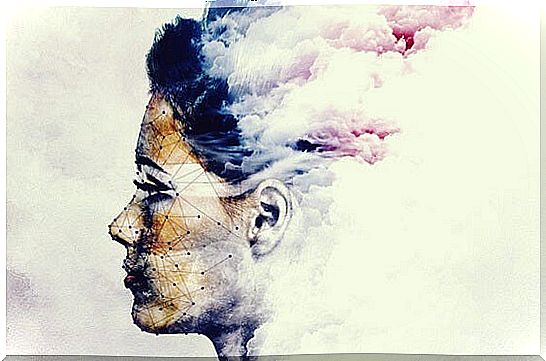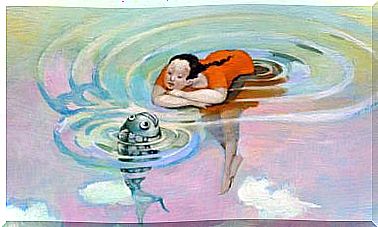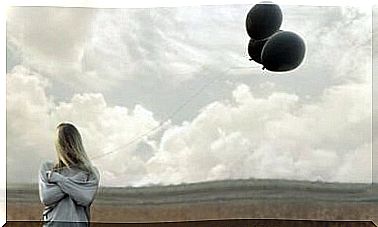Is It Possible To Change And Remain The Same?

How many times have we been told or heard “never change”? Thus, in a way, the change can be seen as negative, as a weakness : “it has changed, it is no longer the same”. Change is necessary, it is natural and essential for survival, yet many see it as something negative. But what if we admit that it is possible to change and remain the same?
In the face of most of the changes we make to adapt, there is resistance, either internally or from our environment . On the other hand, this type of resistance acts against the change when it is announced or begins, but also when it begins to take place and some can even continue when it has already been consolidated. Now, is it possible that these changes, these transformations, allow us to maintain our essence, a continuity or a coherence between who we were, are and will be?
In this article we will deal with the subject of personal change, we will try to understand why there is resistance to change and it can be “frowned upon”, and finally we will try to give reasons that support the idea that we can change and remain the same.
Why do some people resist change and see it as a weakness?
Resistance to change is normal, all systems have internal forces that seek permanence and stability. That is, maintaining the daily dynamics of operation (even if it is problematic) is easier than creating an alternative, different or new dynamic. You already have certain habits automated and others have adapted to them. Even the routine allows you to be predictable, that you do not generate in others the need to adapt to the new conditions that you pose to them. Therefore, short-term tenure is usually more comfortable than change. Hence one of the resistances in front of him.

On the other hand, people resist change because, as time goes by, they get used to having habits and coping styles. They spend a lot of time creating psychological tools to manage difficult moments and although these tools are not adequate: they are their own, they are their personal creation.
In this way, resistance to change arises and also change can be seen as a weakness. Because, if you have acted in one way for so long and it has apparently been effective: why are you changing it now? As we have said, the people around us also feel calmer and more comfortable if they can predict our attitudes, responses, and behaviors. If we change, that prediction for a time is almost impossible or it becomes more insecure, and therefore, without realizing it, those around us also seek permanence and stability and may end up opposing a certain resistance to the changes we propose.
On the other hand, change can be seen as a weakness. Changing your mind can cause others to see you as insecure, fickle, and, as we’ve said before, unpredictable. However, changing an opinion, when we believe that the one we previously defended was wrong, is a smart and courageous decision in the long run. Otherwise, we will most likely end up being prisoners of our own contradiction: to think something and defend the opposite.
Likewise, the change of opinion is the result of a reflective process, during which, upon receiving new information and perceiving reality in a different way, we realize that what we were thinking no longer helps us, it is no longer correct. Therefore, it is fantastic! Thus, what would define us is this intelligent way of proceeding and not one or the other opinion.
Although the process of change implies a personal metamorphosis in which many of our ideas or characteristics are involved, by changing we can come to feel that we are giving up a part of our “being”. And more if we take into account that our environment can perceive change as a weakness.
Change and remain the same: a possible challenge
In most cases, the personal change process seeks to bring out the best in each individual. In reality, what we know as change is the result of freeing the person from their chains, limits and fears. We are not changing, but we are removing barriers and being true to our essence by allowing it to express itself and spread its wings.
How can we change and remain the same? We can do so by seeking to revolve around our own axis, look at reality from different points of view, know how to appreciate the global nature and the exceptional nature of each situation. And from there, choose how to behave, what to think and what to say according to the moment and our feelings. We can change without preconceived and rigid rules that force us to always act in the same way, feeling it or not.

Changing and remaining the same requires putting aside any type of orthodoxy or rule, consciously choosing the way to show yourself to the world at that particular moment. All this allows the individual to be true to his essence and therefore can change and remain the same in some way. Because choosing where to position yourself according to what you feel and not according to what you “should do” is the most free and legitimate way not to betray yourself.
Eastern philosophy and the art of change being the same
Eastern philosophy explains that virtue is in not stagnating, in realizing one’s own fixations and limitations and overcoming or transcending them. This being the way we have to change and remain the same. Because in this way, we open a space for our true being to emerge, manifest and develop.
Different masters of Eastern philosophy explain that changing and remaining the same is not a skill that is learned easily or quickly. It requires a constant effort, also because our psychological system, either due to economy or the need to seek permanence, seeks to remain stable and have firm pillars.
According to Robert Spencer, in his book “The Art of the Warrior” , to remain elastic, we would do well to get used to handling different points of view, thus avoiding the danger of anchoring ourselves in a single perspective. Only proper training in this type of mental gymnastics leads to spontaneity. If the exercise is interrupted, in a short time our mind will tend to protect itself, becoming trapped in the chains of its own thoughts.
In closing, I would like to share a metaphor that explains how it is possible to change and remain the same:
“Water beats everything because it adapts to everything. It can be a fluid, a solid, or a gas. It can be soft or hard, rigid or elastic. Motionless or impetuous, calm or stormy. It can run slowly or roll, avoid an obstacle or collide violently with it. Rushing or splashing. Water is the natural analogy of change as the capacity to adapt strategically to different circumstances ”.
And if you were like water … what would happen?









